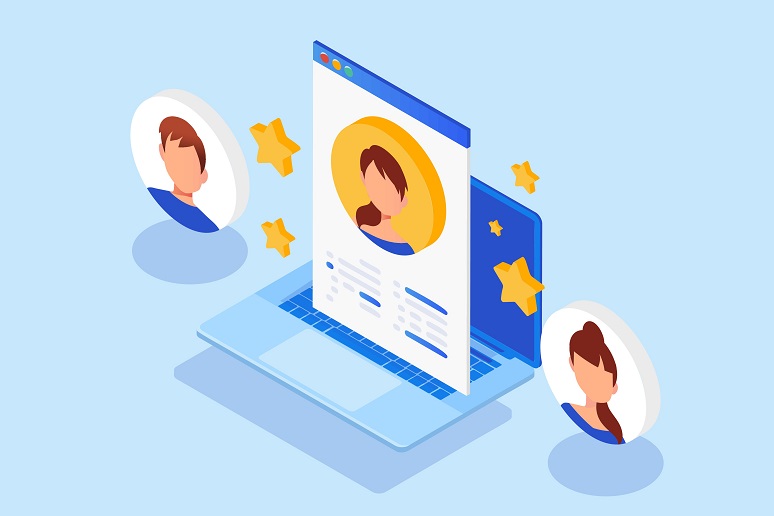With
job openings at or near record highs, many workplaces are retooling their hiring and retention strategies with the hopes of addressing the Great Resignation once and for all. Everything from
four-day workweeks to increased
workplace flexibility has been proposed – but community-building platform startup MixR has another approach: What if every employee had a friend or workplace community that could support them and make them feel included within the larger workplace?
Last year, former WorkSpace Connect editor
Beth Schultz interviewed Cecile Moulard, co-founder and CEO of MixR, on the importance of providing employees with a space to share their passions (work-related or not). While workplace communities aren't anything new, MixR aims to "[create] a spontaneous, more human way of relating to each other that can reignite the humanity in us,” through the ground-up creation of organic work communities, Moulard said in the article.
Recently, I sat down with MixR’s Head of Partnerships & Sales, Brett Brewster, to catch up with the company and get his insight on several workplace topics like building workplace communities, addressing employee burnout, and leveraging workplace communities to address hiring and retention.
Responses and questions have been edited for conciseness and clarity.
Q: When it comes to addressing employee burnout and fatigue, why is it important to have dedicated spaces for workplace communities? Also, how should workplaces think about getting started?
BB: If we're talking about burnout or mental health, the employees have to want to buy into the platform they're using. I talk about this all the time; you have to get employee buy-in. And if the corporation is trying to set up groups around mental health and burnout, but they're using their productivity tools to do so, it almost defeats the purpose. If I'm trying to have a conversation around why I'm so burnt out, yet I'm being pinged on the sidebar with more work stuff, it almost defeats the purpose of trying in the first place.
So, we [at MixR] really want to provide that
safe, trusted space. The other big thing that sets us apart is obviously our shared interests. If you're joining a corporation or you're within a corporation, how are you meeting new people that are outside of your own product set? With MixR, we match and connect people through shared interests. So, when you're creating the groups — when you're creating your profile — you're tagging them with interests that relate to the group or things that you enjoy.
Q: Maintaining these workgroups takes a bit of commitment too. From your perspective, what can workplaces do to maintain workplace groups and keep engagement up?
BB: You have to get the employee buy-in, and you need to create engaging onboarding — that's a great start. Some other really good tips are [creating work groups] to house your diversity and inclusion (D&I) groups and your employee resource groups (ERGs) because those employees are always going to remain active within their communities. Also, we [at MixR] have all sorts of tools you can use to keep the group active, and these spaces can be used to host your monthly or bi-weekly events.
Then, the other big thing is really focusing on employee onboarding. So, imagine joining a company these days — whether it's remote, hybrid, or in-office — and think about how you would initially meet your fellow coworker. HR comes to you and says, “Hey, we're using MixR,” and you can automatically be put into an onboarding group, where you're going to meet new people, get questions answered, and find mentorship. And then, HR also says choose some interests and select from these employee-run groups, which you might find of interest. Before you know it, you're connected with people all across your organization within the first couple of weeks.
Q: Perhaps the biggest challenge of the Great Resignation is ensuring that the employees you currently have don't decide to leave. So, how do workplace communities help in this regard?
BB: If you are connecting with people at your corporation through shared interests, and you have an actual friend at work, typically that friendship is going to start through a shared interest. And if you have a group of friends that are all coming together around a common interest, the retention rate is going to be much higher. And if you actually have
friends in the office, you're probably going to want to stay.
If you have these groups set up, you're going to know people across the entire organization. So, if you're not exactly happy with your current role, department, or just some things off, but you don't want to leave the corporation, you're going to have the ability to know people across multiple different departments where you can reach out to possibly stay [within the organization].
Q: Do you have anything else to add to The Great Resignation topic? Are there any other creative ways that workplaces are looking to address this issue?
BB: We’re seeing a lot of corporations struggling to keep in touch with those employees who have left their organization. With the Great Resignation, some corporations that were maybe amazing to work for went through some drastic cuts during COVID and let go of a lot of good people. Wouldn't it have been nice to have kept in touch with those people to where now if you’re looking to rehire, you can make the process is easier? So, with one perspective client, we are creating a safe alumni group to let them stay connected with their former workers.





